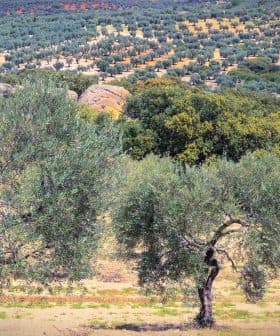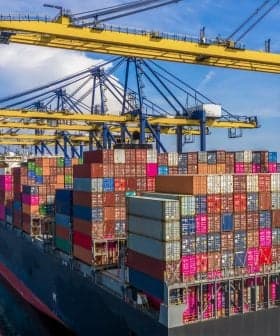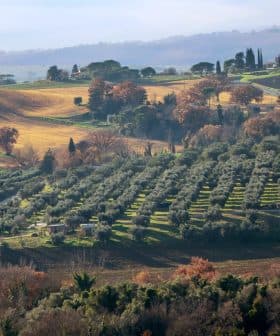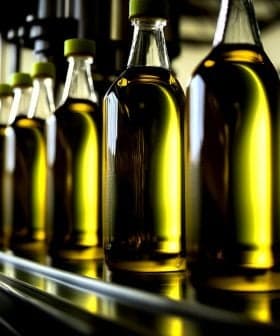India's Olive Oil Market Shows Growth Potential Despite Challenges
India's olive oil market is growing, with sales projected to reach €198 million by 2028. Companies face challenges such as high tariffs and misinformation, but are seeing success in cities and smaller markets.
Tariffs have caused uncertainty for olive oil producers in the US, but the outlook for the olive oil market in India remains positive, with sales steadily increasing. Spanish olive oil dominates the market in India, but high tariffs and traditional cooking practices are barriers to further growth, although a potential free trade agreement between the EU and India could help reduce tariffs and encourage higher consumption.
On-again, off-again tariffs have created uncertainty for some of the world’s largest producers and bottlers in the United States, the world’s second-largest olive oil consumer.
However, officials and companies remain bullish about the outlook for the olive oil market in India, the world’s most populous country.
According to market research from the Spanish Institute for Foreign Trade (ICEX), olive oil sales by value have steadily increased, rising from €99 million in 2018 to €164 million in 2024. ICEX further projects sales to reach €198 million by 2028.
“Over the past decade, the olive oil market in India has seen consistent high single-digit growth, driven by increasing acceptance and use in Indian cooking,” Siladitya Sarangi, country manager for India at Deoleo, the world’s largest olive oil bottler, which has been present on the subcontinent for more than 60 years, told Olive Oil Times in an email.
See Also:Spanish Growers Eye Indian Market for Table Olives“This shift has been particularly noticeable in the consumption of lighter-flavored olive oil variants, such as extra light, which better suit local cooking methods,” he added. “Moreover, India has proven to be a learning market, where Deoleo explores diverse uses of olive oil.”
Deoleo’s Figaro and Bertolli brands are two of India’s top ten olive oil brands by market share. Fellow Spanish bottlers Borges and Rafael Salgado are also in the top ten. Spanish olive oil dominates the market, making up 82 percent of imports by volume in 2023.
However, companies face significant hurdles in India, including household penetration outside major cities and high tariffs.
World Bank data show that after meteoric growth, with import volumes rising from 45,000 kilograms in 2003 to nearly 1.9 million kilograms in 2012, imports have remained relatively flat, exceeding two million kilograms in 2020 and falling to 1.7 million in 2023.
“The main barrier continues to be the price, as olive oil is generally more expensive than other edible oils,” Sarangi said.
Virgin and extra virgin olive oil are subject to a 45 percent basic duty and a five percent integrated goods and service tax, a tariff on goods moving internally in India.
ICEX estimated that the average price of a liter of olive oil in India is about €13. Olive oil represents four percent of total edible oil consumption.
“The 45 percent basic duty does impact the price competitiveness of olive oil compared to other edible oils,” Sarangi confirmed.
“However, in June 2022, the European Union and India resumed discussions on a long-awaited free trade agreement, which could lead to a reduction in these tariffs,” he added. “This would certainly have a positive impact on the competitiveness of olive oil prices, encouraging higher consumption in the country.”
Along with tariffs, the olive oil industry sometimes struggles to incorporate olive oil into the country’s many traditional cuisines, and there is misinformation.
“There is a perception that olive oil is not suitable for Indian cooking, especially when it comes to cooking at high temperatures,” Sarangi said.
However, the company noted that rising interest in international food culture is helping to fuel demand for olive oil.
“While olive oil is not traditionally part of Indian cuisine, we are witnessing significant growth in its interest and usage,” Sarangi said.
“This is not only because Indian consumers are embracing international cuisines but also because they are starting to incorporate olive oil into local dishes, seeking healthier options without altering the authentic taste of their food,” he added.
See Also:Deoleo North America CEO Says Sustainability is Key to Growing Olive Oil SectorWalter Zanre, the managing director of Filippo Berio UK, agreed that olive oil is more compatible with Indian cuisines than with other food cultures in Southeast and East Asia.
“ I see more opportunity in India [than in China] because culturally there’s more understanding of the use of olive oil in cooking. They’re that much closer to the West in that respect,” he said.
While Filippo Berio is not widely sold in India, Zanre said the brand is recognizable in some cities due to India’s large diaspora population in the United Kingdom.
The ICEX report cited the emergence of a middle class in India with disposable income and growing consciousness around healthy eating as reasons for optimism.
“Demand is fueled by the upper class and the working, urbanized middle classes, who are increasingly concerned about a healthy diet and are beginning to introduce olive oil into their diets,” the institute wrote.
Indeed, Deoleo confirmed that much of its growth in India has been centred on Mumbai and Delhi, with increasing sales in smaller cities as well.
“While major cities remain the primary drivers of the olive oil market in India, we have seen significantly higher growth in other secondary cities, due to the economic expansion the country is experiencing,” Sarangi said.
“This trend reflects a geographic diversification in consumption as improvements in infrastructure and growing purchasing power in these areas foster a higher demand for products like olive oil,” he added.
To succeed in India, the ICEX report said Spanish olive oil importers must develop local logistics infrastructure and focus on expanding distribution away from supermarkets and large retailers to retail stores and kirana.
ICEX also identified online sales and the hospitality and restaurant sector, responsible for 40 percent of edible oil purchases in India, as significant sources of opportunity.
Deoleo, for its part, said the company currently manages manufacturing, distribution and marketing activities through its subsidiary in India.
“In 2018, the company centralized its operations in the country to capitalize on the growing olive oil consumption, which is considered a priority market for the group,” Sarangi said.
“India has become a key market for exploring new consumption opportunities,” he concluded. “We now possess a total of four warehouses at strategic points in the country: Mumbai, Kolkata, Delhi and Bangalore.”
Share this article









